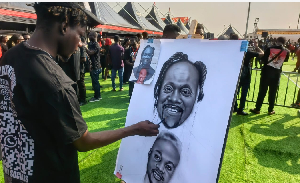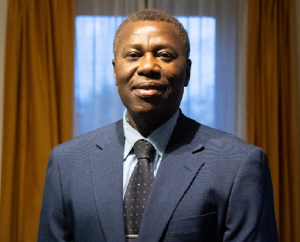Former Minister of Health, Alex Perceval Segbefia, has distanced himself from the €2.4m ambulance scandal that has hit the ministry.
It has emerged that John Mahama’s National Democratic Congress (NDC) government procured some 30 ambulances estimated at €2.4m but the vehicles are said to be lying idle because they are not fit for the purpose for which they were acquired.
The revelation and other rot in the ministry by the current Minister of Health, Kwaku Agyemang-Manu, have set many tongues wagging.
Mr. Agyeman-Manu made this disclosure during a familiarization tour of some health facilities in Accra, which took him to the Tema General Hospital, Tema Medical Stores, La General Hospital and the Air Force Base where the ambulances are being kept.
The unannounced visit was to interact with the health workers and take note of the institutional challenges.
The minister said the ministry had referred the matter to the Economic and Organized Crime Office (EOCO) for further investigations.
Subsequently, Mr. Segbefia quickly granted a media interview, distancing himself from the transaction.
He said it was not done under his tenure.
“No contract was signed under my tenure. People keep forgetting that I was the minister for 18 months and there were seven ministers over an eight-year period so no contract or no financial arrangement was done under my tenure as minister,” he told Citi FM on Wednesday.
“I have no problem with any investigative body investigating what has occurred with regards to any matter under the Ministry of Health either before or during the tenure under which I am, and if I have to assist, I am willing to assist anyone who is part of the investigative team or the investigative body, so that is not a major concern to me,” he posited.
He, however, charged the government to ensure that the ambulances are cleared from the port and used effectively.
He said, “I welcome the investigations that the minister wants to embark upon, but while the investigations are ongoing, it is also important to see how quickly we can get the equipment out of the port. Let’s kick out the ambulances and let’s deal with what has gone wrong. Let it not be like a situation with the gallopers which were left for years to rust.”
Surprisingly, Mr Segbefia rejected the first consignment of 30 ambulances, which arrived in 2016 as health minister, saying at the time that they were substandard.
Mr. Agyemang-Manu told journalists on Wednesday that in the course of the transition, it was detected that the ambulances, meant for the National Ambulance Service (NAS), were supplied but the ministry did not accept them because of the specification shortcomings, even though they were paid for.
Enquiries by the ministry’s new leadership revealed that the €2.4m had been paid through a Bank of Ghana (BoG) transaction to the supplier of the ambulances, although they were rejected for being below the standard of NAS.
The 30 vehicles, purchased at the cost of €80,000 each, were part of the 200 ambulances the Ministry of Health purchased last year to augment the fleet of NAS in its emergency health response countrywide.
However, inspections carried out by NAS after delivery of the vehicles showed that 30 did not meet the standard and were therefore rejected by the government, which meant that until they were replaced, they would not be paid for.
NAS Left Out
Chief Executive Officer of the NAS, Prof. Ahmed Zakariah, explaining why the service rejected the ambulances, said an ideal ambulance, right from beginning, is designed as such, with the needed equipment factored into its manufacturing, but with the rejected ambulances, they had already been manufactured and improvised with equipment to look like ambulances.
“The fitting inside will fall with time and cause harm to patients,” he observed.
He disclosed that the ambulance service was left out during the procurement process.
Prof. Zakariah said normally, the service conducts three different inspections of the ambulances – twice during the manufacturing and once before they are shipped into the country – but that was not done during the last procurement process.
“But with these, we were not part of the inspections; we only did post delivery inspection and that was when we discovered the anomaly,” he said.
Inconsistencies
Mr. Agyeman-Manu said his office, upon receiving the information about the payment, followed up with the contractor – Big Sea Company – only to find out that the company had no idea that the 30 sub-standard ambulances had been paid for because the company’s account had not been credited with the money.
“They brought the proposal and they rejected them during the transition. The report we are getting was that the supplier supplied, they never accepted, but the ambulances have been paid for,” Mr. Agyeman-Manu said.
“So I wrote to the Ministry of Finance and they said that they had paid the €2.4m for the Ministry of Health but records do not show any payment.”
The sector minister said there are also no documents showing receipt of the ambulances by the ministry.
“When you procure items and the supplier brings the items, there should be someone at the receiving end who should sign documentation to show that these items have been received by the user agency; but we do not have any documents to show,” he stressed.
He claimed that checks with the BoG to see how the money was paid, who wrote for instructions to transfer government funds to pay, hit a dead end.
“The search done so far from the Ministry of Finance indicates that these vehicles were not procured by any loan facility arrangement; and it looks like it was paid from the consolidated account, and that is where we are,” he added.
General News of Friday, 15 September 2017
Source: dailyguideafrica.com













